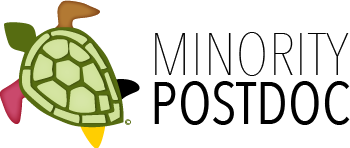Reporting from the SACNAS National Conference, San Jose, California.
Ph.D. scientists Danielle Lee (@dnlee5), David Kroll (@davidkroll) and Alberto Roca (@MinorityPostdoc) shared how tweets, blogs, and writing promote science scholarship. For those who missed it (or the live tweeting), a quick recap follows.
All three panelists stressed the importance of writing, and writing often. Student researchers sometimes forget that they are writers too. They need to publish papers, present at meetings, and apply for funding. To do this well requires storytelling skills that can be honed through blogging. Lee noticed that blogging improved her writing so much that her thesis advisor commented on how well her dissertation was written. This is partly why Kroll and Roca encourage students to blog as much as possible.
Also, "blogs are the great equalizers," said Kroll, a professor at North Carolina Central University whose blog Take As Directed is part of PLoS Blogs. Nobel laureates can connect with high school scientists and vice versa. These conversations help communities to develop and facilitate a public consciousness about life in the lab, scientific ethics, new discoveries, and even what working toward a Ph.D. entails.
Lee, who writes for the "scientifically naive" on her blog The Urban Scientist (at Scientific American's blog network), used social media "to demystify" writing a doctoral dissertation. She even streamed her thesis defense to an audience of about 200 people. For Lee, webcasting her defense was a "natural extension" to making the process of writing her thesis an open-access project. She kept a live word count on her blog to track her progress. People started following her and encouraged her to keep writing. She formed a community of science-interested individuals who became invested in her experience. This does not happen as easily with traditional, technical science publications, Roca said.
A blog can also facilitate communicating with people who share similar concerns and interests, which can be particularly beneficial for minority scientists. "They are about conversation and inclusiveness," said Kroll.
Roca's website, MinorityPostdoc.org, has a roster of diversity bloggers whose writings can foster discussion on how scientists of diverse backgrounds experience the process of science and, in general, all scholarship. Blogs include those such as Musings on Native Science, Denim and Tweed, ChemistryBlog, and Minus Two Fish. Roca also acts as the host of the Diversity in Science blog carnivals to promote diversity in science. A carnival is a curated series of blogs on a rotating, central theme such as Pride Month.
Tweeting, which Roca described as microblogging, can be useful for spreading knowledge and making science more accessible. Following scientists or journalists who go to scientific meetings is a way to attend virtually and to see what different people think is important. In the end, social media is about outreach. It's about informing and engaging people about science. After all, as Kroll said, "knowledge is meant to be shared".
The citation for this article is:
D. Hernandez (2011) "Social" Science: Experimenting with Social Media to Build Science Communities. DiverseScholar 2:4
Daniela Hernandez, Ph.D., is a Freelance Science Writer and former 2011 AAAS Mass Media Fellow at the Los Angeles Times. She is currently enrolled in the Science Communications Program at the University of California at Santa Cruz. Follow her at @danielaphd. Any opinions expressed in this article are solely those of the author.
Originally published 31-Oct-2010
DiverseScholar is now publishing original written works. Submit article ideas by contacting us at info@DiverseScholar.org. This work is licensed under a Creative Commons Attribution-Noncommercial-No Derivative Works 3.0 Unported License.
![]()
